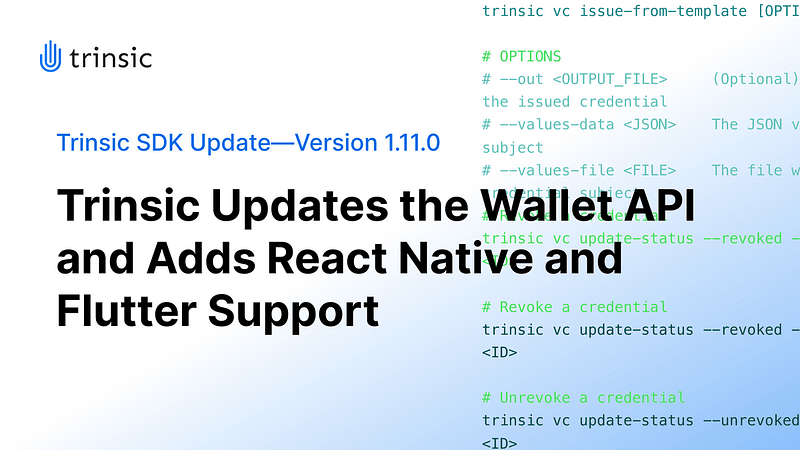We’ve released the latest version of the Trinsic SDK—version 1.11.0. In this release, we’ve made two important product updates that make building with Trinsic easier and more accessible. The updates include:
- Deprecating the Account API (potential for breaking changes)
- Adding React Native & Flutter support
Below, we’ll dive deeper into these improvements and discuss what it means for you as a product builder.
Deprecating the Account API
This product update is particularly relevant for those who already have integrations with Trinsic. We decided to deprecate the Account API, making it easier for developers to create and interact with wallets. All the capabilities that were found in the Account API can now be found in the Wallet API; however, they are done differently, so updating to the latest SDK may cause breaking changes.
Because of this, we have prepared a migration guide on how to migrate from the Account API to the Wallet API in our documentation. Always feel free to reach out to the Trinsic team over Slack or email if you get stuck.
Additionally, If you are not wanting to make these changes now and want to keep using the current SDK version, we are continuing to support the backend for it. However, as soon as you do update to the newest SDK, you will need to migrate the methods in the Account API to the Wallet API.
New Environments Supported: React Native & Flutter
We also made the decision to remove the authentication tokens using Oberon. This means developers no longer need to set up the native library linking, which caused a lot of friction when working with certain languages or environments like Go or Android. Now, we use simple bearer tokens.
Most importantly, this change allows us to provide some additional platform support. We are excited to announce that we support React Native with the Typescript SDK. If you want to build your integrations and your wallet experience in React Native, you can now use the Typescript SDK. See our documentation to learn more. Flutter (Dart) is also now supported on all major mobile, desktop, and web platforms.








